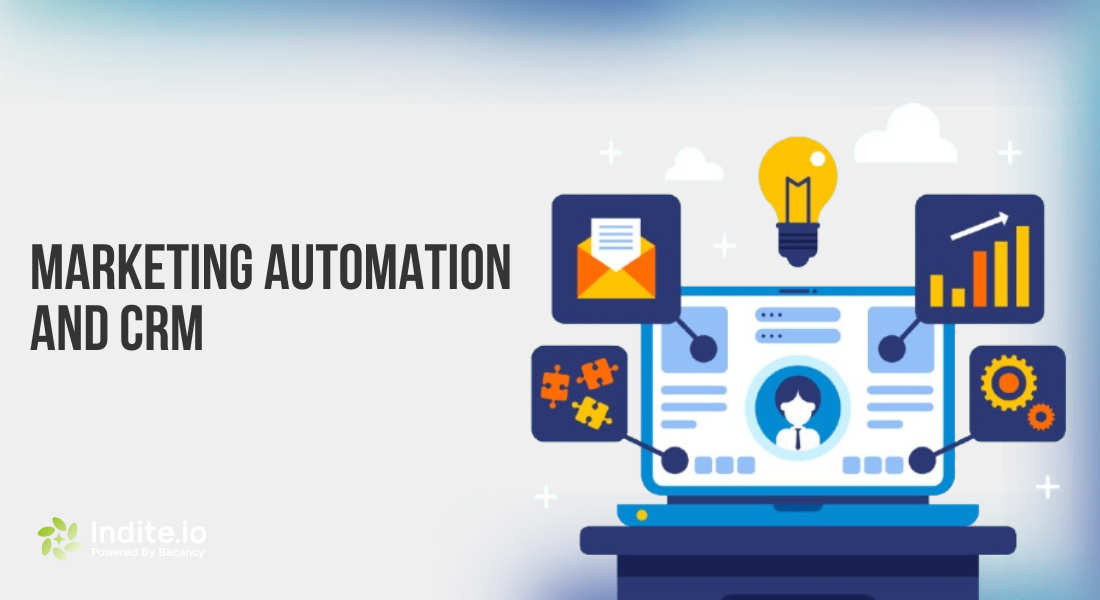Marketing Automation and CRM: A Complete Guide for 2025

Every client interaction contains potential, and the way a company manages such potential can greatly favor or hinder the attainment of growth. Leads falling through cracks or marketing messages going astray simply underscore the lack of communication between systems. Herein lies the integration of Marketing Automation and CRM: allowing businesses to put their data to good use, consolidate their workflows, and better connect with their customers.
Instead of easing the chaos of competitors, this integration puts in a single, intelligent hub where sales and marketing align to automate tasks and deliver smooth customer journeys. It is about saving time, yes; and it is about fostering relationships.
What is a CRM? Definition and Examples
Instead of easing the chaos of competitors, this integration puts in a single, intelligent hub where sales and marketing align to automate tasks and deliver smooth customer journeys. It is about saving time, yes; and it is about fostering relationships.
Key Functions of a CRM include:
- Contact management and customer history
- Sales pipeline tracking and forecasting
- Task and activity scheduling
- Customer service and support ticketing
- Analytics and reporting
What is Marketing Automation? Definition and Examples
Marketing Automation uses software tools to simplify and smoothen repetitive marketing tasks. This enables businesses to consistently deliver personalized experiences at scale. Rather than sending emails or handling each customer interaction, automation tools handle these processes, taking up less time and providing less room for human error.
Indite has special importance over here. Being a no-code platform for automation, Indite takes one step ahead of the old-world marketing automation by enabling its users to design, deploy, and scale workflows within a few clicks. Marketers with no technical knowledge can set up smart campaigns that integrate smoothly with current CRMs and other tools.
Key Functions of Marketing Automation
- Core functions of Marketing Automation with Indite include:
- Automated email campaigns and drip sequences tailored to customer behavior
- Social media posting and scheduling to maintain consistent engagement
- Lead scoring and nurturing that aligns with sales pipelines
- Customer segmentation and targeting powered by data-driven insights
- Analytics and performance tracking with dashboards that give real-time visibility
CRM vs Marketing Automation: Key Differences
While both CRM and marketing automation tools aim to enhance customer relationships and improve business outcomes, they focus on different customer journey stages.
| Aspect | CRM | Marketing Automation |
| Primary Focus | Managing customer relationships and sales | Automating marketing tasks and nurturing leads |
| Users | Sales teams, customer support | Marketing teams |
| Core Functions | Contact management, pipeline tracking, customer support | Campaign automation, email workflows, lead scoring |
| Data Collected | Customer details, purchase history, service interactions | Campaign responses, engagement metrics, lead behavior |
| Goal | Drive sales and customer satisfaction | Generate and nurture leads to hand off to sales |
| Examples | Salesforce, HubSpot CRM, Zoho CRM | Marketo, Pardot, ActiveCampaign |
Key Benefits of Marketing Automation + CRM Integration
Marketing Automation and CRM Integration produce a smooth flow of data and workflows between sales and marketing teams. Following are the six key benefits:
Unified Customer Data
Integration breaks down the barriers within the organization by being the sole point for truth about the customer. Marketing and sales teams get access to real-time insight and further communication is consistent.
Improved Lead Scoring and Nurturing
Marketing automation tracks customer behavior and CRM tracks sales history. Together they make sure lead scoring is done right, and lead nurturing goes smoothly.
Better Customer Experience
Better engagement, loyalty, and long-term satisfaction occur from personalized campaigns and communication on full target.
Boosted Sales Productivity
Sales teams do not waste time chasing cold prospects because they get better qualified leads fed into CRM directly from marketing automation.
Smarter Analytics and Reporting
Merging CRM sales metrics with campaign performance data provides businesses with a panoramic 360° view of ROI and customer journeys.
Revenue and Growth
Smoothly increased conversion results in repeat sales and growth of the businesses.
How to Successfully Integrate and Implement Marketing Automation in CRM
Integration requires careful planning and execution. Here are six essential steps:
- Define Clear Goals
Identify whether you want to boost lead generation, improve retention, or streamline workflows before starting integration. Clear objectives will guide your setup and ensure the integration delivers measurable results. - Choose Compatible Tools
Pick automation and CRM platforms that integrate natively or through APIs to reduce technical hurdles. Choosing tools with future scalability ensures your system can grow with your business needs. - Clean and Organize Data
Remove duplicates, outdated contacts, and errors before merging systems to maintain accuracy. Clean data sets the foundation for accurate insights and effective automation. - Align Sales and Marketing Teams
Ensure both departments agree on lead scoring models, KPIs, and handoff points. Collaboration between sales and marketing builds accountability and strengthens conversion rates. - Set Up Workflows and Automations
Design email campaigns, lead routing, and task automation that sync seamlessly with CRM pipelines. Well-structured workflows save time and eliminate repetitive manual tasks. - Measure, Optimize, and Scale
Track performance through joint dashboards, analyze weak points, and continuously refine workflows. Regular optimization helps adapt strategies to changing market conditions and customer expectations.
Summary
By 2025, companies simply cannot think of CRM and marketing automation as two separate entities. CRM enriches customer relationships, while marketing automation smoothens the campaigns and brings engagement. When they operate in tandem, they increase one another’s powers to develop a thorough solution for managing the entire customer lifecycle.
If the parties involved understand the differences, the benefits of integration, and have an implementation plan, they will, through this integration, gain better productivity, improved customer experience, and sustainable growth. For any company that intends to thrive in this digital-first age, Marketing Automation-CRM Integration is no longer an option but a necessity.